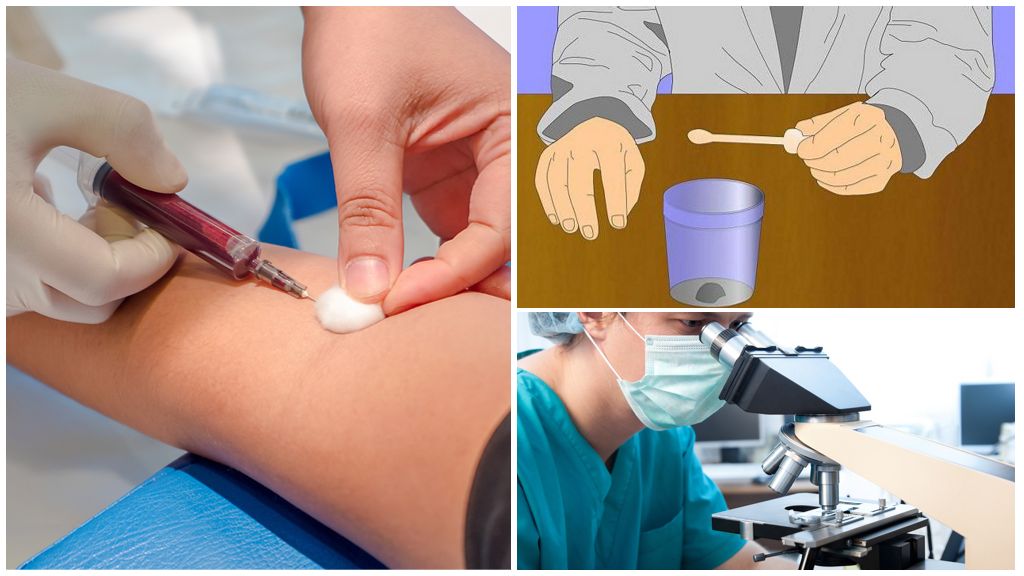Giardia in the liver - symptoms and treatment
Content
- Giardiasis of the liver
- Symptoms of Giardia in the liver
- Diagnosis of Giardiasis
Detection of Giardia in the liver is a sign of an atypical form of Giardiasis, which requires serious treatment. Mostly these parasites live in the upper intestine, where they feed, multiply and feel safe.Penetration into other areas of internal organs can be triggered by mass invasion in the absence of treatment or by structural features of the digestive and biliary system.
Important!
The presence of microscopic worms in the liver is fraught with the development of complications for both small and adult patients. It is necessary to treat pathology with such localization before the development of irreversible changes in the structure of the main blood-forming organ.
Description of the pathogen
In the human body, one species of giardia parasitizes - L. Intestinalis. The structure of these protozoan organisms of the order of the simplest is optimal for living in the intestine. They have a body in the form of a bulb and several flagella for attachment to the villous walls. Reproduction occurs by pair division, the whole process takes about 20 minutes, which contributes to the rapid growth of the parasite population.
To continue the life cycle, nature has endowed these simplest with the ability to encyster, that is, the formation of dense shells around itself (cysts). Only in this form lamblia can survive in the external environment, without obstacles into the mouth and safely pass through the stomach.Cyst is well preserved in cold climates, does not die in water and in moderately aggressive liquids.
The term - hepatic giardia, used in the detection of pathogens in the analysis of duodenal contents. In an enlarged photo you can see that such a trophozoite has no differences from a typical individual.
On a note!
Detection of hepatic localization is associated with generalized invasions, when the worms enter the blood-forming organ involuntarily through the mouth of the duodenum. In this case, hepatobiliary lambliosis is diagnosed.
Infection conditions
Giardiasis of the liver can be infected, regardless of working conditions, age and social conditions. This type of protozoa is distinguished by high survivability and is well preserved on household items, clothing and skin. Cysts can be in standby mode for up to 20 days, and in water up to 35 days.
Re-infection occurs through the fecal-oral route. Cysts are excreted in the feces and must fall into the oral cavity. This is a prerequisite for the life cycle Giardia. You can become infected as a result of contact with infected objects, use of dirty water and food, as well as close communication with sick people.
Frequent carriers of cysts are domestic animals and small insects. Diagnosis of Giardia in the liver in an adult and a child is usually preceded by:
- non-compliance with the rules of hand hygiene;
- use of insufficiently washed fruits and vegetables, especially grapes due to the accumulation of insects on it;
- drinking raw water;
- contact with infected people;
- swimming in ponds and accidental swallowing of water with lamblia cysts;
- poor hand washing after games with cats and dogs.
Diagnosis of Giardia in the liver in children is recorded more often than in older patients. This is due to the peculiarities of the immune system and the acidity concentration of the gastric juice. Children are often infected in school or kindergarten due to the high prevalence of infection in the team. Kids up to 3 years old can swallow parasites in the case of the habit of biting their nails and sucking their fingers.
All these factors contribute to the ingress of individuals first in the intestine. They migrate to the liver only when there is a lack of food and when a large number of trophozoites accumulate.
Important!
The body is most susceptible to infection with liver lamblia during periods of weakened immunity,associated with chronic diseases and infections, as well as gastritis with low acidity.
Clinical picture
Hepatic localization of parasites necessarily precedes the intestinal form of giardiasis. This contributes to the first manifestation of the characteristic signs of intestinal invasion, followed by a change in the clinical picture in the direction of hepatobiliary changes. Symptoms of Giardia in the liver include:
- dyspeptic disorders (bloating in the abdomen, bouts of nausea, rumbling in the intestines);
- constipation or diarrhea for no reason;
- tongue plaque;
- pain in the navel, later in the right hypochondrium;
- poor health due to intoxication (weakness, loss of appetite, poor sleep, irritability;
- change the color of the palms and feet (yellowing);
- allergic rashes on the body, itching of the skin and mucous membranes.
The first sign of a typical giardiasis is usually pain syndrome. Discomfort associated with damage to the mucous membranes of the intestine and other organs of active individuals. They are able to penetrate the pointed intestinal part of the intestinal membrane and cause pain.
When hepatic localization of giardiasis, pain in the right hypochondrium is associated with blockage of the ducts with trophozoites and a violation of the flow of bile. It causes digestive disorders and dyspeptic disorders. With the progression of the disease and no treatment, yellowing of the ocular sclera and enlargement of the liver can be observed.
In children, the onset of the disease is often characterized by the development of atopic dermatitis due to an allergy to the products of vital activity Giardia. Some patients do not always feel discomfort with giardiasis, may not be treated for years and be carriers of the infection in a chronic form.
Important!
The degree of manifestation of the clinical picture depends on the number of parasites, the age of the patient and the presence of concomitant invasions by other types of worms, which is often observed in hepatobiliary lambliosis.
Diagnostics
To detect Giardia in the liver, you need to contact an infectious diseases specialist or parasitologist. In the absence of these specialists, the therapist deals with the treatment and diagnosis in adults, and the pediatrician in children.
The doctor at the reception collects a detailed history, conducts an external examination of the skin, mucous eyes and tongue.To determine the size of the liver, first carry out palpation. If there are signs of an increase, ultrasound is prescribed to clarify the degree of deviation and study the structure of tissues of the organ and the characteristics of the contents of the gallbladder. Refinement of the diagnosis of giardiasis is carried out by research:
- Blood PCR for DNA detection Giardia;
- duodenal contents taken by sensing or during FGDS procedure;
- blood on the ELISA to Giardia (detection of antibodies);
- fecal masses;
- biochemistry of blood from a vein to liver enzymes.
Find parasites in the feces is not always possible. Cyst removal takes place periodically, so the lamblia tests in the liver and intestines are repeated for three days in a row. Active individuals are rarely present in the feces and more often not viable. The diagnosis of giardiasis is established regardless of the number of found specimens and their stage of development.
Important!
A blood test for an ELISA to Giardia can be false positive up to 3 months after treatment. This is due to the long-term preservation of antibodies to the parasite in the blood.
Treatment
Remove Giardia from the liver using antiparasitic agents.But before you treat the disease, you need to clear the bile ducts as much as possible and strengthen the immune system. This will reduce the risk of complications after taking medication. The treatment is carried out in stages with subsequent rehabilitation.
Specific drugs for giardiasis
Treatment of Giardia in the liver is carried out with tablets and suspensions from the group of antiprotozoal agents. Therapeutic regimens are based on the use of:
- Tiberal (once);
- Metronidazole (1 week);
- McMiror (7 days);
- Tinidazole (once);
- Vermoxa (5 days).
How many days and what doses to treat giardiasis, the doctor decides. It depends on the age of the patient and the severity of the invasion. After the end of the intake of specific tablets, it is recommended to drink through choleretic drugs (Allohol, Khologon).
Enzymes
During the expulsion of Giardia prescribe a course of enzymes and sorbents for cleansing the body (Festal, Mezim Forte, Pancreatin, Enterosgel, activated carbon). They help eliminate toxins and improve liver function.
Antihistamines
At the same time, antiallergic treatment with Suprastinum, Diazolin, and Loratadine is performed.If an asthmatic component in the form of choking is detected in children, ketotifen is prescribed for a long course.
Nutrition
Patients with giardiasis of the liver are immediately transferred to treatment with a sparing diet with restriction of spicy, salty, smoked foods and dishes that irritate the intestines. You also need to exclude from the food sweet, flour and alcohol. The basis of the diet should be fruits, juices, dairy drinks and cottage cheese. For breakfast, doctors recommend cereals. With a low acidity of the stomach, it is necessary to eat acidic fruits and kefir.
The period of rehabilitation and prevention
To restore health is not enough to just get rid of Giardia. After the end of the main course of treatment, it is necessary to colonize the intestines with a good flora and strengthen the immune system. To do this, they recommend drinking Bifidobacterin, Linex, Bifikol, Hilak forte. Additionally requires a course of treatment with vitamins.
For the prevention of giardiasis of the liver, experts advise that you thoroughly wash your hands before eating, do not swallow water when bathing, regularly cut your nails and monitor the health of pets. Fruits and vegetables, even from the personal garden, must be washed.With the appearance of regular abdominal pains, it is necessary to pass an analysis of feces for parasites.











